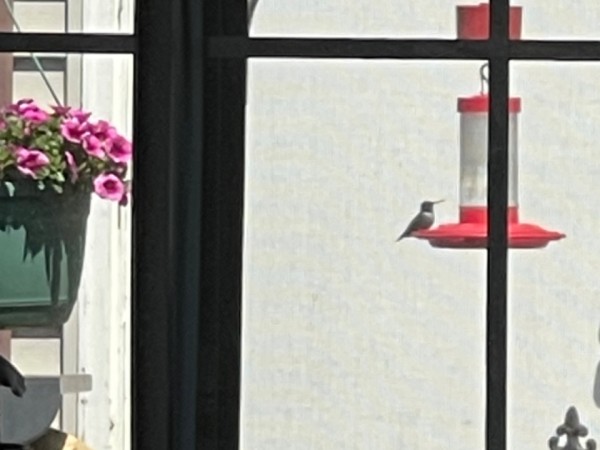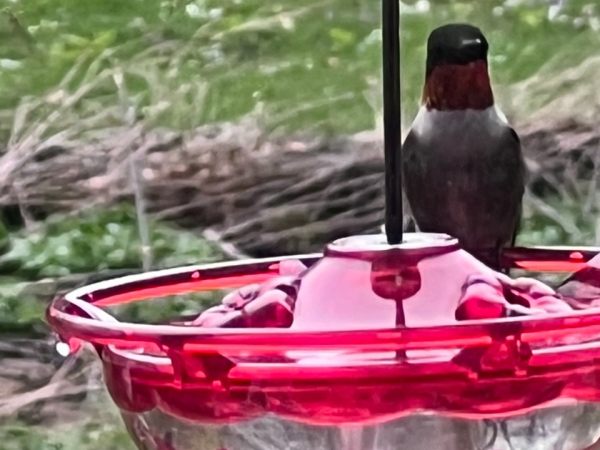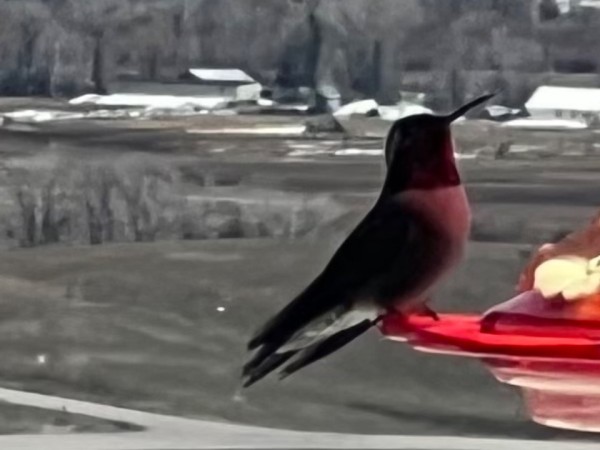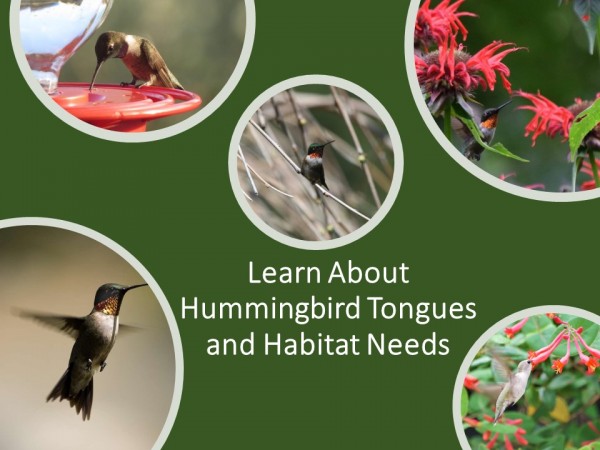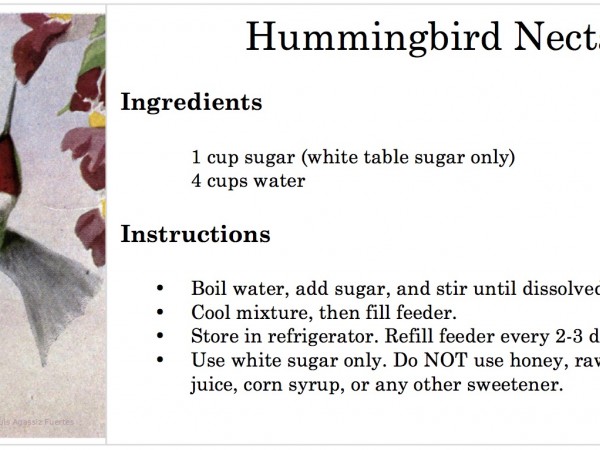May Momentum
May is here and hummingbird migration is now widespread throughout North America. Please report your observations to Journey North as we gear up to celebrate World Migratory Bird Day on Saturday, May 13.
Photo: Steven in Landenberg, PA (05/03/2023)
Ruby-throated Hummingbird
May is bringing a surge of Ruby-throated Hummingbird reports, with Journey North observers sharing about their recent returns from the Upper Midwest and up through the Northeast. Many of the first arrivals are males as they stake claim to breeding territories. How does the pace of migration this year compare to previous years? Explore our Ruby-throated Hummingbird, First Sighted map and see if you notice any trends.
Janet in Acton, MA: "Overjoyed, with just two feeders out at present, saw the first male rubythroat at both feeders within about 20 minutes this afternoon. A few days ahead of schedule!" (04/27/2023)
Deborah in Palos Hills, IL: "So excited to see! Around noon today." (05/03/2023)
L In Newport, RI: "Was concerned as usually the hummingbirds here around April 20. Luckily, saw 1 today feeding on a lilac and a feeder" (05/03/2023)
Lisa in Pound Ridge, NY: "Welcome back, little guy!!!!! Two days later than usual, but still right on time. Those storms!" (05/02/2023)
Elizabeth in Walpole, NH: "He stayed for a very long drink at a feeder I put in a different location than years prior. . . The first males arrived the same day last year. . ." (05/03/2023)
Rufous Hummingbird
Rufous Hummingbirds are well adapted to cold temperatures. This allows them to migrate into areas where nighttime temperatures in spring may drop below freezing.
Judy in Kimberley, BC: "Male rufous bright orange and second rufous less colourful (female)" (04/30/2023)
Janet in Fernie, BC: "First male rufous of the season" (04/30/2023)
Gregg in Coldstream, BC: "Feeder up 2 hours. . . 2 males 1 female" (05/02/2023)
Other Species
Other species tracked by Journey North include Allen's, Anna's, Black-chinned, Calliope, Broad-tailed, and Costa’s, and reports are starting to stream in for some these species as well.
Black-chinned Hummingbirds are moving through New Mexico and into Colorado. Once they find a suitable territory, this species quickly turns their attention to nesting season.
William in El Prado, NM: "Male Black-chinned Hummingbird courts a newly arrived female by approaching her perch on a large sagebrush plant and doing a back-and-forth hovering "dance." The dance involves the male hovering and moving in a horizontal line about 2-3 feet end to end and about 1 foot in front of the stationary female, with both hummingbirds looking at each other." (04/30/2023)
The Calliope Hummingbird is the smallest bird in North America. Their diminutive size, even by hummingbird standards, doesn’t prevent them from migrating long distances. Journey North observers are welcoming them back.
Barbara in Missoula, MT: "Saw my 1st Calliope hummingbird at the feeder on our front deck at 8:58AM. 4 days later than 2022. Then saw several more that evening." (04/28/2023)
Pam in Kamiah, ID: "First female calliope about 2 weeks later than last year: (04/28/2023)
Robbie in Sagle, ID: "We saw both an Anna’s and calliope." (4/30/2023)
Janet in Fernie, BC: "First male calliope early this morning" (05/03/2023)
Reports of Broad-tailed Hummingbirds moving through Colorado continue to come in.
Jim in Steamboat Springs, CO: "Male broad-tailed hummingbird (Selasphorus platycercus) spotted at 12:40 pm. Returned multiple times through day - seems to be same male. Color in photograph is deceiving due to light reflection from red feeder. Elevation: 7030 feet." (04/30/2023)
Steve in Lakewood, CO: "First of the season! 6:44pm. . . Female Broadtail!!" (05/01/2023)
Angela in Elizabeth, CO: "First of the season! Broad-tailed adult male. About two weeks late. Weather I'm sure, has had much to do with late arrival. Finally, warmer temps." (05/02/2023)
Nectar Consumption
Keep track of nectar consumption at your feeders with this resource. You might be surprised to learn not only how much hummingbirds consume, but also how their life cycle is related to eating patterns throughout the season. Reminder: do not use red-dye solution or add red food coloring in your hummingbird feeders.




